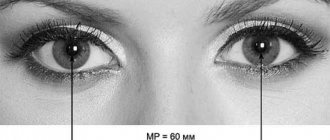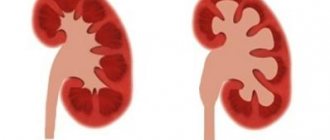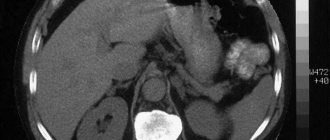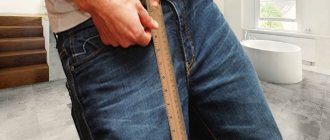Articles In the case of uterine prolapse, there is a need to fix this organ along with its appendages in its natural, from an anatomical point of view, position. This function is successfully performed by using a bandage. This remedy is considered the safest and most widely available of all possible methods for solving this problem. The bandage is selected based on the specific stage of the pathology and individual anthropometric characteristics. It would be ideal if the doctor personally prescribes the type of support belt, advises how to properly care for it and how long to wear it.
Indications for wearing
In case of uterine prolapse, a bandage is prescribed by a gynecologist. Self-medication and self-prescription of this method are strictly contraindicated.
When making a decision, the doctor is based on a complex of various nuances that remain inaccessible to ordinary women.
When the uterus prolapses, a support belt is prescribed if:
- The opening of the cervical canal moves closer to the vaginal opening, but the cervix does not yet appear outward.
- The uterine cavity is lowered and part of the cervix of the reproductive organ is visible from the vaginal ring, including in a state of calm.
- Recurrence of the problem after treatment with a conservative or radical method.
- Surgery is contraindicated due to age restrictions and other contraindications.
- The elasticity of muscle tissue is impaired after a difficult birth.
- The gestational age has passed its time equator.
- Several children are born.
- The period after surgery occurs.
- The pelvic floor muscles are subject to increased stress.
Often, a bandage is used as a temporary measure or to provide symptomatic assistance. Its advantages include:
- Availability of use anywhere.
- Eliminate symptoms as soon as possible.
- Low price.
- Wide range of sizes and types.
- Ease of use.
Fixing panties have one important drawback. They do not have a therapeutic effect, but only reduce the load on the pelvis, thereby easing the woman’s general condition.
How to choose a bandage
A woman has a certain freedom in choosing a bandage. There are many manufacturers on the market offering products in different price categories. The variety of sizes and designs is due to differences in the anatomy of the female body, including the position of the uterus.
- Size. The main criterion in choosing a fixation belt. The pelvic organs should not be compressed by it. Using a tightly fixed belt, the uterus should be supported in its natural position. If the size is larger than necessary, the desired result will not be achieved.
- Material. The service life of the bandage is determined by the quality of the material used in its manufacture. Devices with a high degree of strength are more expensive. The support belt is worn continuously, so a comfortable material is extremely important. It should not irritate or rub the skin. This factor is especially important for sensitive skin. The hypoallergenic property of the device is also important to her. In the warm season, it is necessary to use both light and durable belts.
- Model. It is selected depending on the stage of prolapse of the reproductive organ. If a model does not have the required size, it is not recommended to purchase another model or select the wrong size. For an effective therapeutic effect, you should strictly adhere to the doctor’s recommendations. Therefore, it is worth looking for the designated model elsewhere.
If you are in a stable financial situation, you can buy a replacement belt, since contact with the skin requires periodic washing of the bandage. It is not advisable to remain without a fixation belt for this period; correction of the condition of the uterus requires the continuous use of a bandage.
What is nephroptosis?
Almost all organs of our body have a fixed natural position. Even such mobile structures as the heart or lungs are securely held in place by surrounding tissues. Physiological fixation of the kidneys is ensured by several mechanisms:
- Fat pad. Each kidney is normally surrounded by a thick layer of elastic fat. It protects it from blows and keeps it in the correct position.
- Sufficient intra-abdominal pressure. The second “pillow” of the kidneys is the pressure inside the abdominal cavity. Normal blood pressure is possible only with strong and healthy abdominal wall muscles.
- Dense capsule and ligamentous apparatus. Fixation of the kidneys in the diaphragm and lumbar area is ensured by ligaments. They prevent the organ from moving when changing body position and movement.
Causes and consequences of kidney prolapse
Nephroptosis is more often observed in women, especially those who have lost weight dramatically. Girls who are too keen on strict diets run the risk of losing the fat pad in their kidneys. Once displaced, an organ does not always “fall” into place.
The ligamentous apparatus of the kidneys is damaged by changes in intra-abdominal pressure: frequent coughing, constipation, heavy lifting, hypertonicity or hypotonicity of the abdominal muscles. The appearance of a wandering kidney is typical after serious injuries: road accidents, falls from a height, hooligan attacks. Less commonly, the ligaments of the urinary system are damaged after purulent infections.
There are three degrees of the disease. The first degree is characterized by minimal displacement of the kidney. At the last stage, the kidney may descend into the pelvic cavity.
The worst complication of nephroptosis is damage to the vessels of the renal hilum. When the organ is displaced, the ureter, renal artery and veins are bent and twisted. This, in turn, leads to necrosis of the kidney or blockage of urine flow.
How to wear it correctly
The vast majority of jockstraps are made in the form of panties. Fixation occurs on the sides and on the perineum. The fixation belt must be worn strictly in accordance with the doctor’s recommendation. It requires washing periodically.
Various manufacturers provide their own tips for wearing the system correctly. Some people welcome wearing a bandage over underwear, others, on the contrary, under it. If worn under underwear, the risk of irritation, including allergic ones, in the perineal area increases. In addition, this method of wearing is unhygienic.
Uterine prolapse involves wearing a fixation system from the moment you wake up. The optimal body position at the time of dressing is lying down. In this position, the pelvic organs are located as close as possible to their natural position. The retainer is put on in the same way as putting on panties and then fixed. First, using buttons or Velcro, tighten the sides tightly. Finally, fixation occurs on the perineum. It is dangerous to tighten the elastic bands too much, as this can lead to poor circulation in the pelvis. After the final fixation of the bandage, you can begin your daily life.
Before going to bed, you must remove the device while lying down. An exception to this rule may be for women with a certain stage of uterine prolapse.
During a visit to the pool, the fixing belt is worn under the swimsuit. Any physical activity without using a bandage is prohibited. During a visit to the toilet, the device is removed.
Bandages for prolapse of internal organs
The main reasons that can lead to prolapse or prolapse of internal organs include:
- Injuries, bruises, blows, sprains.
- Severe physical overload, too active sports without proper precautions (for example, refusal to wear a prophylactic bandage in case of prolapse of internal organs ).
- Sudden weight loss, or, on the contrary, weight gain in a short time.
- Postoperative period.
- Genetic predisposition of the patient, congenital pathologies, gynecological diseases (in women).
- Inadequate preparation for pregnancy and childbirth, lack of suitable recovery procedures.
- Weakness of muscles and ligaments, due to which their normal supporting function is disrupted.
- Other factors that can lead to prolapse or prolapse.
Until recently, the problem of prolapse was most often encountered mainly by elderly people and patients with a predisposition to this type of disease.
However, due to a sedentary lifestyle, lack of proper nutrition and regular fitness training, these days many young people have begun to seek medical help due to prolapse. Fortunately, today a whole range of surgical and conservative measures has been developed, designed not only to alleviate the condition of patients in such a difficult situation for them, but also to help get rid of the pathology forever. But surgery or other surgical intervention is not always possible due to a number of medical contraindications. Then specially designed bandages come to the rescue when the internal organs prolapse. They are divided not only by type, structural features, composition of materials, but also by purpose. The main types of such medical and orthopedic structures and tips for their correct selection are presented below. How to choose:
- Bandage for prolapse and prolapse of the uterus . A good bandage design for such a complex pathology should provide not only reliable, but also fairly soft support. There should be no excess pressure or tension. A sense of security, comfort and freedom of movement - all this must be strictly monitored when trying on a model. In addition to choosing the correct size of the product (according to the hip circumference in cm), you should also pay attention to additional functionality. Modern bandages for uterine prolapse often have secondary tape ties, durable and comfortable Velcro fasteners, removable applicators, and their gusset (if it is a panty model) can be unfastened if necessary - for maximum comfort of use.
- Bandage for rectal prolapse or prolapse. Choosing such a bandage is almost the same as choosing a model for a prolapsed uterus. The only difference is that the materials in the composition are even more gentle on the body (usually the gusset is made of 100% cotton), the average degree of fixation, as well as a removable soft tubular applicator, the degree of indentation of which is easily adjusted. A well-chosen model will simultaneously hold the rectum in the correct position and prevent its prolapse and injury. In this case, the design will remain almost invisible under clothing.
- A bandage for prolapse of the kidneys (for right-sided, left-sided nephroptosis, or for prolapse of both kidneys) is quite easy to choose. It is enough to know your waist circumference in centimeters and compare the data with the size grid table. If you have chosen the right model and its size, it will help the prolapsed kidney to stand in the renal bed and remain in this position until the organ is fully optimally fixed. As a result, there is a minimization or absence of concomitant pathologies associated with nephroptosis: aching or paroxysmal lower back pain, infectious formations (for example, pyelonephritis), indigestion, headaches, fatigue and irritability.
- Other bandage systems aimed at correcting prolapse (prolapse) of other internal organs: bladder, vagina, stomach, and so on. They are selected according to a similar principle, taking into account the unique characteristics of the patient himself (size, shape and type of pathology), as well as the model range. If necessary, our consultants are always ready to help you purchase the best bandage, based on your personal preferences and the indications of your doctor.
Additional bonuses when choosing any bandage that are worth paying attention to can be:
- Sufficient elasticity and at the same time a good level of fixation.
- The presence of additional inserts and anti-slip stripes that prevent the bandage from twisting and sliding during operation.
- The composition of the material from which the product is made: environmentally friendly, safe, hypoallergenic, highly breathable and does not interfere with natural water exchange.
- Thoughtful design created with the participation of doctors.
- Several colors, wide range of sizes.
- The ability to visually correct a figure.
- Durability, strength and wear resistance.
Of course, correction of prolapse of the internal genital organs must be accompanied by a number of special measures.
This includes not only regularly wearing a support bandage, but also changing your lifestyle. Regular muscle training according to a specially designed program (for example, Kegel exercises for prolapse of the female genital organs), review of nutrition, massage (as prescribed by a doctor!), as well as avoidance of heavy lifting, physical and psychological fatigue. Bandage for prolapse of internal organs: this is important to know!
With the exception of the use of the structure for preventive purposes, its use is usually prescribed by the attending physician. In accordance with the patient’s condition, based on the characteristics of his disease, the doctor prescribes not only a specific model of the bandage system, but also the time of its daily use. In addition, the doctor will definitely inform you about contraindications to wearing a bandage: strangulated and unreducible hernias, damage to the skin in the area where the bandage fabric adheres to the body, individual intolerance to the composition of the product, and so on. Therefore, before you start choosing a bandage, we strongly recommend that you first consult with your treating specialist. In turn, the specialists of the MegaMedShop online store will help you not only choose the right type of bandage and its size, but will also advise you on any issues that concern you. Our catalog presents a wide selection of high-quality medical and orthopedic products at an affordable price. You can easily find the option you need by arranging delivery to anywhere in Russia!
How much should you wear?
For each patient, the wearing period is determined individually. The wearing time increases with a significant displacement of the pelvic organs towards the perineum. When surgical intervention is impossible for a number of reasons, the woman is forced to wear a brace constantly in order to improve the quality of her life.
In the first stages of the disease, the period of wearing the bandage is set at a range from one to twelve months. In addition, gymnastic exercises and various methods of strengthening muscles are attributed. While wearing the retainer, the doctor periodically observes the effect of its use. If improvement does not occur, the course of treatment is adjusted. If there are positive changes, the initially prescribed period of wearing may be reduced.
After surgery, a fixation belt is used to prevent relapse and relieve muscle strain. The device is worn for 5-6 hours when performing physical activity.
The bandage as a therapeutic agent is worn for half a day. The retainer is removed during sleep. The skin needs rest, so the device should not be worn around the clock. If skin irritation occurs, immediate consultation with your doctor is necessary.
How is kidney prolapse treated?
Treatment tactics for nephroptosis depend on its degree and the presence of complications. If the symptoms are not pronounced and the kidney is slightly displaced, the treatment is less intensive. If complications develop, surgery is required.
In most cases, grade 1-2 nephroptosis is treated conservatively, without surgery. To stabilize the kidney, special bandages are prescribed. The position of the organ is monitored and monitored regularly.
Sometimes special exercises help reduce kidney mobility. If the fat pad decreases, a diet for weight gain is recommended. However, the most noticeable results come from a bandage or surgery.
How to care
Proper care of the bandage is the key to its long service life. The packaging of any fixation belt contains information on proper care of it. The washing rules are affected by the material used in the production of the device.
The following requirements are common to most manufacturers:
- The water temperature for washing is not higher than 40 degrees.
- Cleaning is done using delicate detergents.
- Boiling and bleaching the bandage is prohibited.
- You can soak the device for no more than 30 minutes.
- Belt wringing is prohibited.
- Drying is allowed on a regular radiator or drying rack.
An automatic machine is not suitable for washing bandages. In it they stretch, the fastening elements are damaged. Ironing and dry cleaning are prohibited.
If all the rules for proper care of the device are followed, the service life of the fixing belt is at least five years. If the rules are violated, the elasticity of the material will be lost in the first year of operation.









